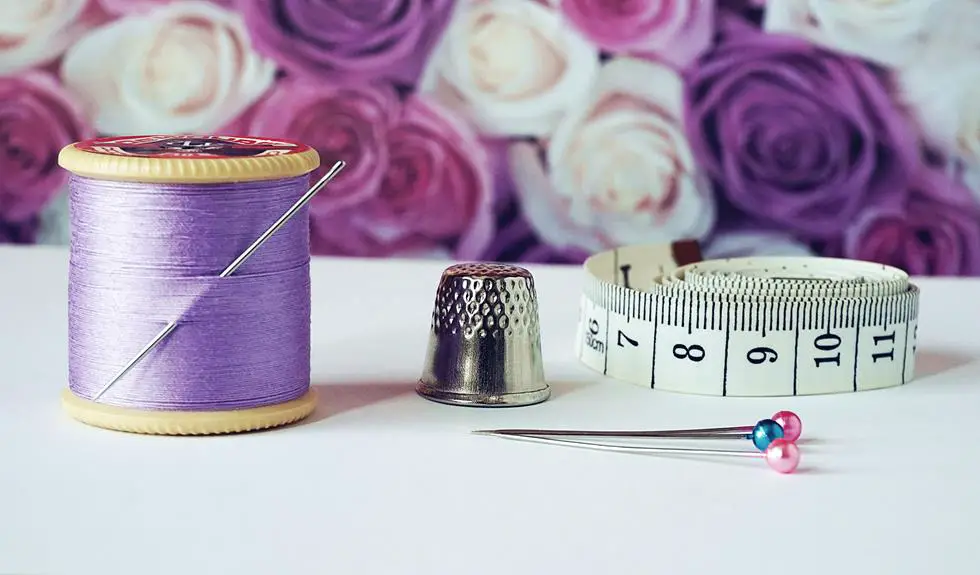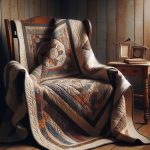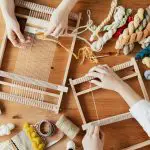When you decide to make a Batiste quilt, you'll want to start by understanding the unique qualities of the fabric itself. Batiste is lightweight and delicate, making it ideal for creating soft, beautiful quilts. You'll need to gather your materials and tools before sketching out a design that speaks to you. Once you've got everything prepared, the real fun begins with cutting and assembling your quilt layers. But before you jump in, there are a few critical techniques to consider that can elevate your project beyond the ordinary.
Table of Contents
Understanding Batiste Fabric
Batiste fabric is a lightweight, finely woven cotton or cotton-blend material that offers a soft, delicate touch, making it ideal for quilting projects. Its fine texture not only enhances the overall appearance of your quilt but also provides a lovely drape, allowing your creations to flow beautifully. You'll appreciate how easy it is to work with, as it's less likely to fray or unravel compared to coarser fabrics.
When selecting batiste for your quilt, consider the thread count and weight. A higher thread count typically means a softer and more durable fabric, which can impact the longevity of your quilt. You'll also find batiste in a variety of colors and patterns, giving you plenty of options to express your style.
It's important to pre-wash your batiste before starting any quilting project. This step helps eliminate any shrinkage later on and allows you to see how the fabric behaves when washed.
Gathering Necessary Materials
Before you start quilting, you'll need to gather all the necessary materials to ensure a smooth and enjoyable experience. Having everything at hand will minimize frustration and keep your creative flow going. Here's a list of essential items you'll want to collect:
| Material | Purpose |
|---|---|
| Batiste Fabric | Main fabric for your quilt |
| Rotary Cutter | For precise cutting of your fabric |
| Cutting Mat | Protects your surfaces while cutting |
You'll also need a good pair of fabric scissors for snipping any threads, a ruler for accurate measurements, and pins to hold your quilt layers together. Don't forget a sewing machine, which is key to stitching everything together.
Lastly, consider adding some personal touches, like embroidery floss or decorative threads, to make your quilt uniquely yours. With all these materials gathered, you're one step closer to creating something beautiful that you can cherish for years to come. So, get excited and prepare your space, because you're about to embark on a wonderful quilting journey!
Preparing Your Quilt Design
Creating a quilt design is the exciting next step that allows you to visualize your finished piece and choose the colors and patterns that resonate with you. Start by gathering inspiration from various sources, such as nature, art, or other quilts. Consider what themes or color palettes speak to you and how you want your quilt to feel.
Next, sketch out your design on paper or use quilt design software. This will help you see how the elements come together and give you a clearer idea of the size and shape of each piece.
Remember to think about the following:
- Color Harmony: Select colors that complement each other and create the mood you desire.
- Pattern Balance: Mix different patterns but maintain a sense of balance to avoid overwhelming the viewer.
Once you've finalized your design, you can prepare to move on to the next step: cutting your batiste pieces. Your design will serve as a blueprint, making the process smoother and more enjoyable!
Cutting Batiste Pieces
When you're ready to cut your batiste pieces, start by selecting the right fabric that suits your design.
Next, you'll want to measure and mark your pieces accurately to ensure a perfect fit.
Selecting Batiste Fabric
Choosing the right batiste fabric is crucial for achieving the perfect drape and finish in your quilt project. When selecting batiste, consider its weight, texture, and pattern. You want a fabric that complements your design while providing the softness and flow that batiste is known for.
Here are a few key points to keep in mind while selecting your fabric:
- Weight: Lighter batiste will create a delicate look, while a slightly heavier option can offer more structure.
- Texture: Check the hand of the fabric. A smooth texture will glide easily through your sewing machine, while a more textured batiste can add visual interest.
Once you've narrowed down your options, it's vital to pre-wash your batiste to prevent any shrinking or color bleeding later on.
This careful selection process will ensure your quilt not only looks beautiful but also holds up well over time.
Happy quilting!
Measuring and Marking
With your batiste fabric selected and pre-washed, it's time to focus on measuring and marking your pieces accurately for cutting.
Start by laying your fabric on a clean, flat surface, ensuring it's smooth and wrinkle-free. Use a measuring tape to determine the dimensions of the pieces you need based on your quilt pattern.
Once you've got your measurements, grab a fabric marking tool—like a fabric pencil or chalk—to make your marks. It's crucial to mark clearly, as batiste can be delicate and may shift during cutting. Measure twice before you mark to avoid mistakes. For straight edges, use a ruler or a quilting straight edge to guide your markings.
If your pattern has multiple pieces, consider labeling each one to keep track of them easily. This will save you time and confusion later on.
After marking, double-check your measurements one last time to ensure accuracy. Once you're satisfied, you'll be ready for the next step in your quilting journey—cutting those carefully marked pieces.
Taking the time to measure and mark correctly now will pay off later, resulting in a beautifully crafted batiste quilt.
Cutting Techniques Tips
To achieve clean edges and precise shapes, use sharp fabric scissors or a rotary cutter when cutting your batiste pieces. The delicate nature of batiste requires you to handle it with care to prevent fraying or distortion.
Make sure you've got a solid cutting surface, like a self-healing mat, to protect both your tools and fabric.
Here are some tips to ensure your cuts are as accurate as possible:
- Use a ruler: A clear acrylic ruler can help you maintain straight lines and even measurements.
- Cut in layers: If you're cutting multiple layers, pin them together to prevent shifting and ensure uniformity.
Assembling the Quilt Layers
As you prepare to assemble the quilt layers, ensure each piece is aligned properly for a smooth finish. Start with a clean, flat surface to avoid any mishaps. Lay out your backing fabric first, with the right side facing down. Next, place your batting on top, followed by the quilt top, which should face up.
To keep everything in place, pin or baste the layers together, making sure to smooth out any wrinkles. This step is crucial for achieving a professional look.
Here's a quick reference table to guide you through the materials you'll need for this process:
| Material | Purpose | Tips |
|---|---|---|
| Backing Fabric | Forms the base of the quilt | Choose a durable fabric |
| Batting | Provides warmth and padding | Select the thickness wisely |
| Quilt Top | Displays your design | Ensure all seams are secure |
Once everything is pinned, you're ready to move on to the next steps of your quilting journey. Take your time; a well-assembled quilt will lead to a beautiful final result!
Quilting Techniques to Use
Now that you've assembled your quilt layers, it's time to focus on the quilting techniques you'll use.
Choosing the right fabric, mastering piecing techniques, and selecting quilting stitches are essential steps that will enhance your batiste quilt.
Let's explore these key points to ensure your quilt turns out beautifully.
Fabric Selection Tips
Choosing the right fabrics is crucial for creating a stunning Batiste quilt that showcases your unique style and enhances the overall design. Batiste is a lightweight, breathable fabric, making it perfect for quilts intended for warmer weather.
When selecting your fabrics, consider the following tips to ensure a successful project:
- Color Harmony: Choose colors that complement each other. Look for fabrics with a consistent color palette to create a cohesive look.
- Print Variety: Incorporate a mix of prints and solids. This contrast adds visual interest and depth to your quilt while keeping it balanced.
Piecing Techniques Explained
Mastering piecing techniques is essential for creating a beautifully crafted Batiste quilt that holds its shape and showcases your fabric choices.
Start by cutting your fabric accurately; precise measurements are vital. Use a rotary cutter and mat for clean edges, and always double-check your measurements before cutting.
Next, decide on your quilt layout. Whether you're going for a traditional block pattern or a more modern design, visualizing your arrangement helps you plan your piecing effectively.
When you're ready to sew, use a quarter-inch seam allowance to ensure your blocks fit together seamlessly.
Press your seams as you go, opting for open seams for bulkier fabrics or pressing to one side for a cleaner finish. This will help you avoid bulky intersections and keep your quilt laying flat.
Lastly, take your time while piecing. It's better to sew slowly and accurately than to rush and make mistakes. If you encounter any issues, don't hesitate to unpick and redo seams.
Each step you take in piecing contributes to the overall beauty and craftsmanship of your Batiste quilt.
Happy quilting!
Quilting Stitch Options
When deciding on quilting stitch options, consider how each technique can enhance the overall design and texture of your Batiste quilt. The right stitches can add depth and character, so think about the look you want to achieve. Here are a few popular options to explore:
- Straight Stitch: This classic choice offers clean lines and a minimalist look, perfect for highlighting the delicate fabric of Batiste.
- Free Motion Quilting: With this technique, you can unleash your creativity. It allows for intricate designs and patterns that can truly make your quilt stand out.
Ultimately, your choice of stitch will reflect your personal style and the quilt's intended purpose.
Experiment with different techniques on scrap fabric before committing to your quilt, ensuring you achieve the desired effect.
Finishing Touches and Care
Adding the final touches to your Batiste quilt enhances its beauty and ensures it lasts for years to come. Start by trimming any excess threads and double-checking the seams. This not only improves the quilt's appearance but also prevents future fraying.
Next, consider adding a quilt label. It's a personal touch that lets you commemorate the occasion or the person it's made for, and it serves as a record of your hard work.
Once you've finished the quilt, it's essential to care for it properly. Wash your Batiste quilt in cold water on a gentle cycle. Use a mild detergent to maintain the fabric's softness and avoid harsh chemicals that could cause fading. For drying, either lay it flat or tumble dry on low heat to prevent shrinkage.
Lastly, store your quilt in a cool, dry place. Avoid direct sunlight, as it can damage the fabric colors over time. Regularly check for any signs of wear or damage, and address them promptly to keep your Batiste quilt looking beautiful for years.
With these finishing touches and care tips, you'll ensure that your quilt remains a cherished piece for generations.
Frequently Asked Questions
Can I Use Batiste Fabric for Other Quilting Projects?
Absolutely, you can use batiste fabric for other quilting projects! Its lightweight and soft texture makes it perfect for delicate designs, linings, or even clothing. Just be mindful of its fragility when quilting. Enjoy your creativity!
How Do I Choose the Right Batting for Batiste Quilts?
To choose the right batting for your batiste quilts, consider the thickness, loft, and material. You'll want something lightweight yet warm, like cotton or bamboo, to complement the delicate feel of batiste fabric.
What Is the Best Way to Wash Batiste Fabric Before Use?
To wash batiste fabric before use, you should use cold water and a gentle detergent. Avoid harsh chemicals and fabric softeners, then air dry or tumble dry on low to maintain its delicate quality.
Are There Any Specific Sewing Machine Settings for Batiste?
When sewing batiste, you'll want to use a lightweight needle, like a size 60/8, and a straight stitch setting. Adjust the tension to be looser to prevent puckering, ensuring smooth and even stitching.
How Do I Prevent Fraying Edges When Working With Batiste?
To prevent fraying edges when working with batiste, you can use a narrow zigzag stitch or a serger. Additionally, consider applying fray check to the raw edges for extra protection and durability.
- How Does Ring Spun Cotton Affect Garment Fit and Shape Retention? - August 13, 2024
- What Are the Challenges in Producing Ring Spun Cotton? - August 13, 2024
- Is Ring Spun Cotton Suitable for Plus-Size Clothing? - August 13, 2024







